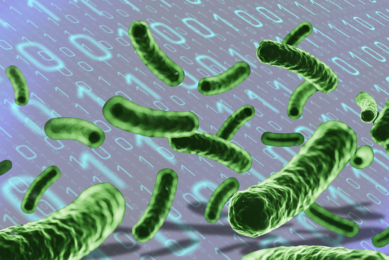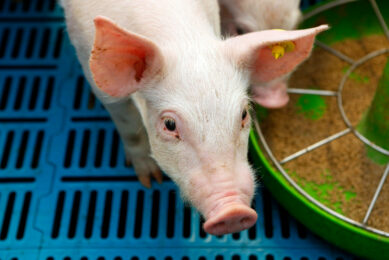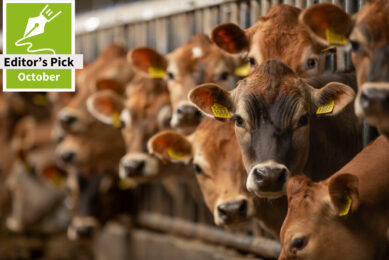Probiotics in animal nutrition – a century of research
Probiotics are preparations based on live microorganisms that are consumed as food and feed additives, and which have a beneficial effect on the health status of humans or animals. It is said that probiotics help prevent imbalances, and enhance the growth of the healthy microflora. What major developments have taken place in the use of probiotics in the past century?
By Guillermo Jiménez, Technical Manager Rubinum, Spain
The intake of food with microbiological activity began as early as the start of human civilization, with fermented milks likely being the first foods containing active microorganisms. However, the scientific base of the beneficial effects derived by the consumption of fermented lactic products was not raised until the beginning of the 20th Century when the Nobel-awarded Eli Metchnikoff (1907) stated that the good health and longevity of certain ethnical groups (for example Bulgarians) was due in part to the composition of their intestinal flora. Metchnikoff suggested that the continuous intake of yoghurt – rich in fermenter bacilli – by such populations decreased the number of bacteria with toxic activity in the colon. Later, different studies demonstrated the relevant role of the intestinal microflora in the mechanisms of local and systemic defence in front of certain pathogens.The marketing of probiotics as additives in animal nutrition began in the 1970s. The value of these new products consisting of live microorganisms was based on the hypothesis that the intake of high levels of certain specific bacteria, with no negative effects on host, could somehow reduce the capacity for the pathogenic bacteria to colonise up to undesirable levels in the digestive tract of the host.
Industrial production
Remarkable advances were made at the end of the 1970 and in the 1980 in the scientific and technical knowledge regarding the use of probiotics in animal nutrition. This resulted in industrial-scale production of probiotics. Studies focussed on evaluating the effectiveness of probiotics on the digestive process, intestinal microflora, and on the growth of food-producing animals. Probiotics were defined as “a live microbial feed supplements that beneficially affect the host animal by improving its intestinal microbial balance”. The interest in these products shown by livestock producers and professionals in animal health was extended to foodstuffs producers and suppliers of feed ingredients and feed additives. The efficacy of probiotics in animal nutrition was then recognised by experts, although still with many reservations.In the 1990s, knowledge of probiotics increased with a number of scientific, technical and economic data supporting the efficacy of probiotics in animal nutrition. For the first time, probiotics were considered as an alternative to the antibiotics that were used for many years as growth promoters in animal nutrition.Today, the ban in the EU to use antibiotics as growth promoters in animal nutrition – as from 1 January 2006 – and the strong demand by consumers concerning the quality and safety of foods of animal origin, have consolidated the use of probiotics in animal nutrition as a natural way to raise healthy animals and thus to produce foods of reliable quality and safety.
EU authorisation
Regulation (EC) No 1831/2003 of the European Parliament and Council of 22 September 2003 on additives for use in animal nutrition provides for the authorisation of probiotics, and for the grounds and procedures for granting such authorisation and placing onto the market. In order to obtain the corresponding authorisation to be used as additives in animal nutrition, the probiotic must show evidence of not having any adverse effects on animal health, human health, or the environment. Furthermore, parameters such as quality of the animal products, natural origin, traceability, animal welfare and/or respect towards the environment are highly considered in any additive by the operators involved in animal nutrition as the first link in the food chain.
There are currently different types of probiotics authorised for use in animal nutrition in the EU, based on microorganisms of the species Bacillus, Lactobacillus, Enterococcus, Kluyveromyces, Pediococcus and Saccharomyces.According to Regulation (EC) No 1831/2003, probiotics are classified within the category “zootechnical additives” and within the functional group “gut flora stabilisers”, which when fed to animals have a positive effect on gut flora. However, the mode of action of each probiotic is different.
Under normal conditions and good health, the intestinal tract of the monogastric animals contains between 109 and 1011 bacteria per gramme of intestinal contents. The intestinal microflora consists of a dominant population (>90%) of bifidobacteria and lactobacilli, a subdominant population (approx. 1%) of coliforms and enterococcus and a residual flora (<0.01%) of clostridia, staphylococci, pseudomonas, yeasts and fungi. In the case of ruminants, the reticulum is the most important part of the digestive tract where 80% of digestion and absorption of nutrients takes place. Under normal conditions there are over 1010bacteria per gramme of ruminal contents, which plays an important role in ruminal fermentation.
Microflora balance
In order to evaluate the effect of probiotics to maintain a good balance of the intestinal microflora, it has to be considered as one of the components of the “digestive ecosystem” – microflora, epithelium of the gastrointestinal tract, immune-lymphoid tissue associated to the epithelium, and the neuron-endocrine system. Correct functioning of the digestive tract depends mainly on numerous interactions between these four components. The role of each component is different along the digestive tract, but in all the segments these components will be responsible for keeping the balance in absorption of nutrients and act as a barrier to possible intruders.In this sense, the role of microflora is essential to keep the integrity of this barrier to pathogen agents or toxic substances. However, the “digestive ecosystem” is an open system and therefore it is exposed to invasion from new microorganisms that may disturb the balance of the resident microflora (dysbiosis). As a consequence this can create disruption to the digestive function and can seriously compromise the health of the host. Probiotics help prevent unbalances and enhance the growth of the healthy dominant microflora.
Toyocerin
The first probiotic to receive authorisation in the EU to be used as an additive in animal nutrition, and one of the most studied at scientific level, is the microorganism Bacillus cereus var. toyoi (Bacillus toyoi, ToyocerinSRTm). Bacillus toyoi is a strain originally isolated from soil in Japan, and which is not genetically modified. It is a microorganism naturally ubiquitous in the soil and is therefore likely to be ingested by wild animals that root in the soil, such as wild pigs or poultry. A part of its very long market history – not only in Europe but worldwide (for example Japan, South East countries, South America) – Bacillus toyoi has demonstrated in vitro and in vivo its capacity to inhibit the growth of pathogenic bacteria of human concern such as Salmonella and E. coli. Also, a reduction in the prevalence of Salmonella was observed in poultry that were fed with diets containing Bacillus toyoi.Some EU countries have already developed and implemented Salmonella control programmes in order to reduce at a minimum level the spread of Salmonella in food animals, food, and humans. In this sense, Bacillus toyoi has been incorporated into the diets of swine and has proven to reduce significantly the presence of Salmonella in pig carcasses at the slaughterhouse. Therefore, Bacillus toyoi demonstrates that the use of probiotics in animal nutrition contributes to rearing healthy animals, and to produce foods free from contaminants and undesirable bacteria.
This article was previously published on NextGenerationFood.com.











